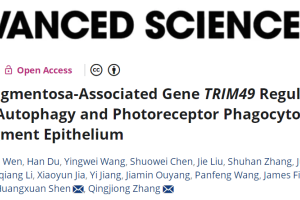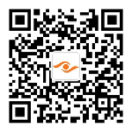
High-altitude Eye Health Challenges: Mission and Urgency
Yushu Tibetan Autonomous Prefecture in Qinghai Province, with an average altitude exceeding 4,200 meters, is renowned for its breathtaking landscapes. However, its high elevation, intense ultraviolet radiation, aridity, and windy conditions contribute to a high prevalence of eye diseases among local Tibetan communities, including cataracts, pterygium, dry eye syndrome, and various complex retinal conditions. Sparsely populated and encompassing vast pastoral and grassland areas, Yushu sees many patients dispersed across remote regions. Township health centers generally lack routine ophthalmic equipment and expertise in common eye diseases. Coupled with poor transportation and scarce ophthalmic medical resources, regular eye disease screening remains challenging. Consequently, some patients miss critical treatment windows, resulting in lifelong vision impairment. Efficiently and accurately identifying these patients and providing timely, effective treatment is a pressing priority.
Tech Empowerment: Ophthalmic Large Language Model Supports Eye Health on the Yushu Plateau
Guided by the National Health Commission, the National Touring Medical Team from Zhongshan Ophthalmic Center (ZOC), Sun Yat-sen University, deployed the world's first ophthalmic large language model, ChatZOC—developed independently by Professor Lin Haotian's team—to Qinghai's Yushu in late July 2025. This marked the pioneering application of this cutting-edge technology in a high-altitude region.
ChatZOC is an ophthalmic-specific large language model trained on massive authoritative medical literature, clinical guidelines, and real-world case data. Beyond AI-powered patient consultation via dialogue, it integrates common ophthalmic assessment tools (e.g., visual acuity, color vision). It can preliminarily identify common anterior segment diseases using clear external eye photos. The model provides not only eye disease prevention and treatment information but also intelligent assistance in screening, initial diagnosis, treatment recommendations, and referral pathways. Accessible via smartphones, ChatZOC enables township healthcare workers—even without specialized ophthalmic instruments—to effectively identify various common and blinding eye diseases, making large-scale grassroots screening technologically feasible.
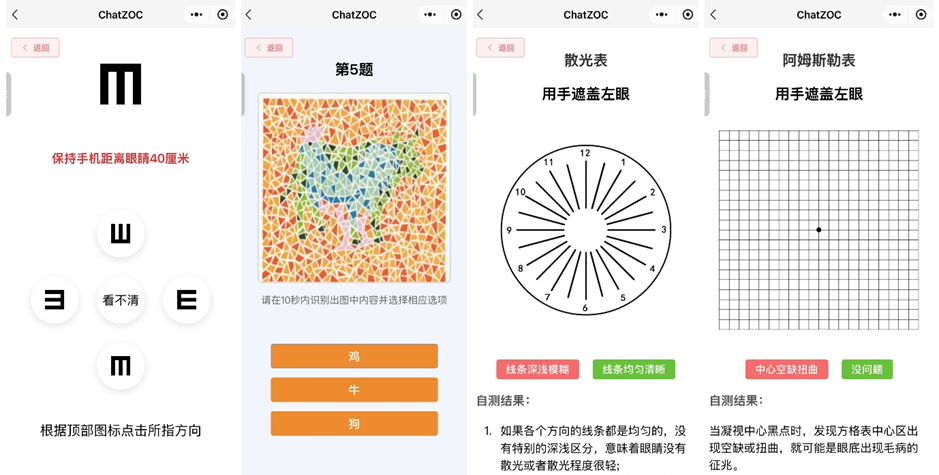
ChatZOC’s embedded ophthalmic assessment tools: Visual Acuity, Color Vision, Astigmatism, Amsler Grid.
Tri-level Care: A Perfect Closed-loop from "AI Screening" to "Sight-restoring Surgery"
A key innovation of this Yushu medical tour was establishing an efficient, sustainable "AI-enabled Tri-level Referral Mechanism":
Level 1: Precise "Needle-in-a-Haystack" Search on Grassroots Level
Associate Professor Luo Mingjie from the ZOC National Touring Medical Team went deep into the township health service centers under Nangqian County and Yushu City to train grassroots medical workers, enabling them to master the use of smart phones to access the ChatZOC system and conduct rapid eye health examinations for villagers. The system auto-analyzes results, generating screening reports that precisely "mark" patients suspected of having eye diseases.
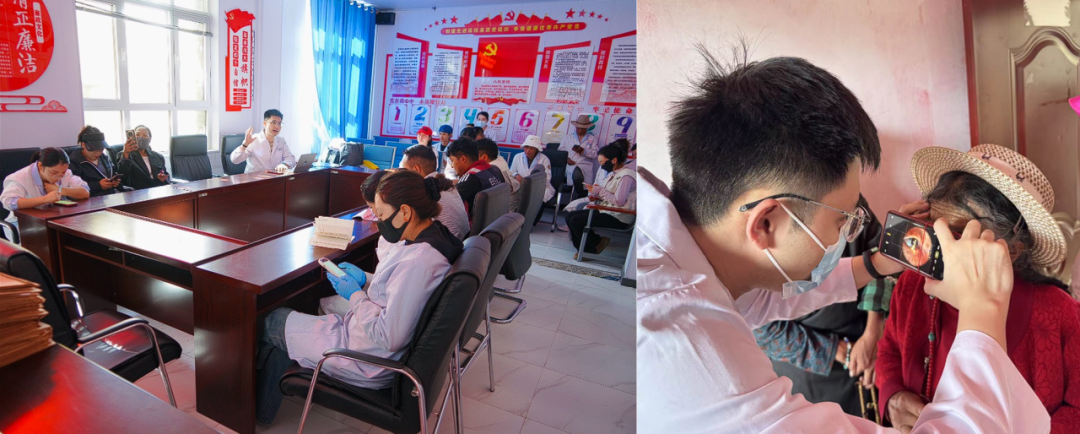
Touring medical team training township health workers on using ChatZOC via smartphone for screening.
Level 2: County-level Centers Connecting the Upper and the Lower
Ophthalmologists at county-level hospitals regularly check the data uploaded by township health service centers connected to the ChatZOC system, and proactively contact "marked" patients suspected of having eye diseases, advising that they be transferred to county hospital. Here, professional equipment like slit lamps and fundoscopes are used for review and confirmation. Treatable cases are managed locally; complex cases are referred upward.
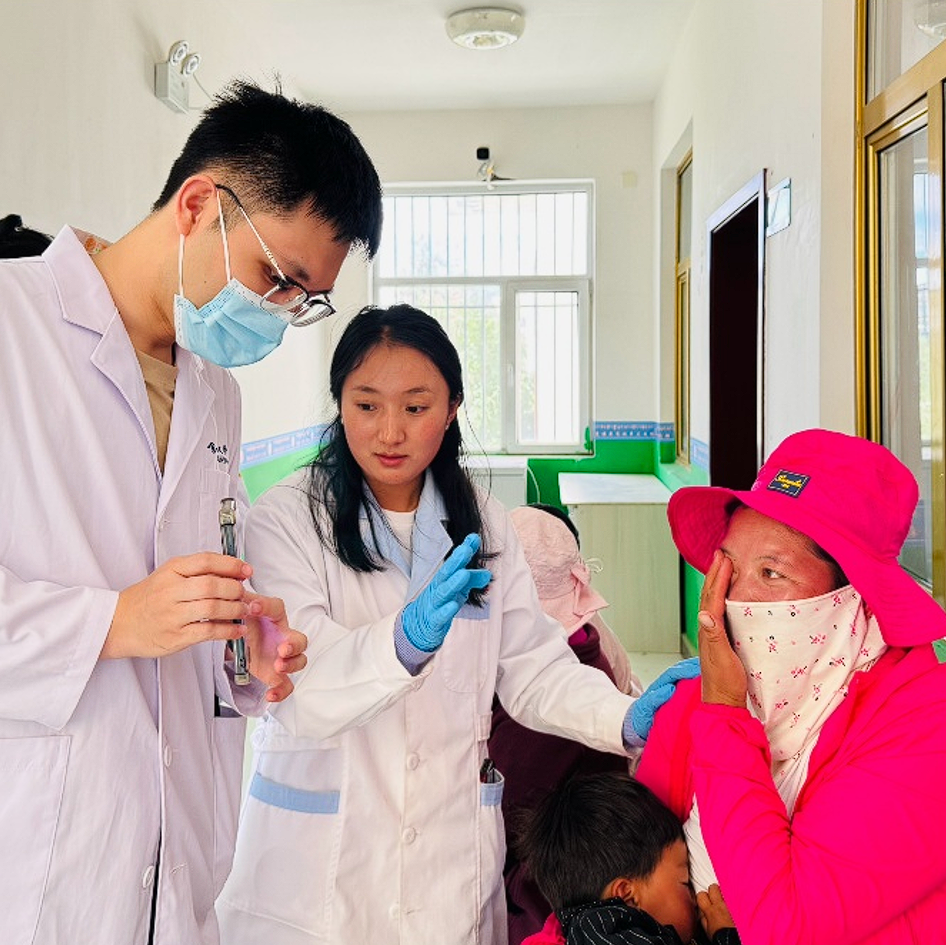
Associate Professor Luo Mingjie instructing a village doctor on screening via smartphone.
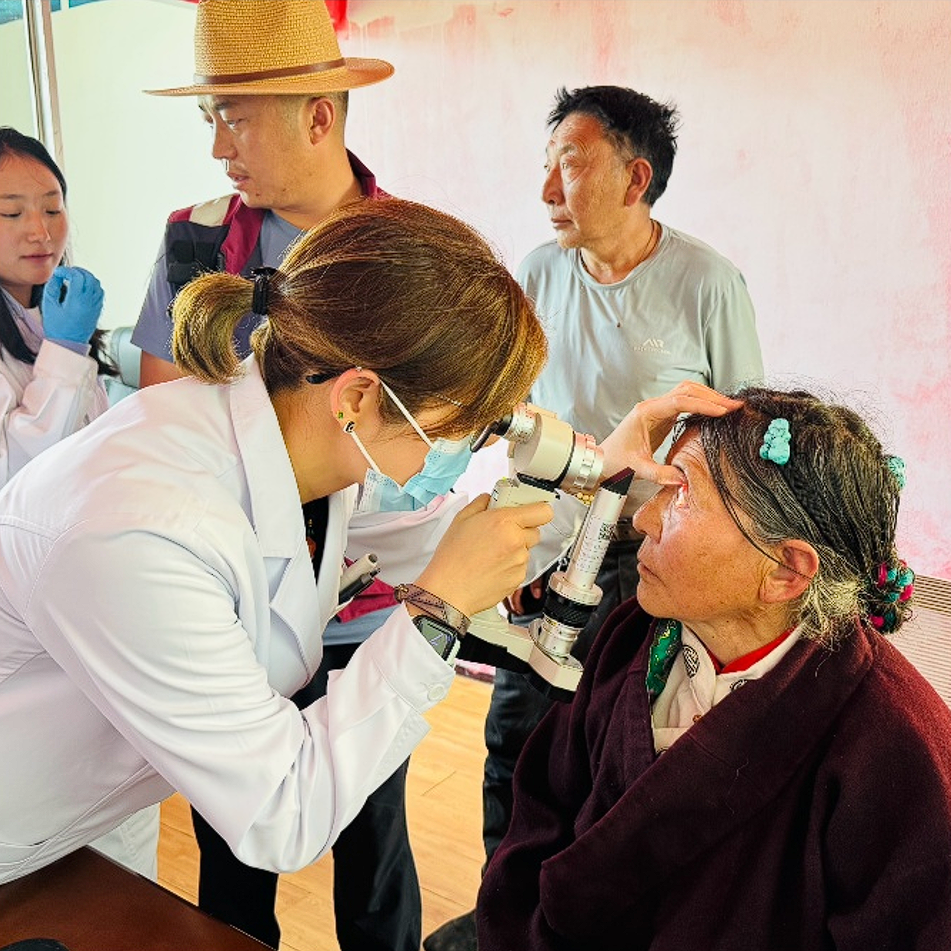
Associate Chief Physician Yuan Min’er reviewing with a portable slit lamp.
Level 3: Experts in Charge, Completing the Closed-loop
All patients requiring referral after ChatZOC screening and human review are uploaded in real-time to a cloud platform and directed to Yushu Prefecture People’s Hospital or Yushu Bayi Hospital. For patients diagnosed with operable cataracts, the ZOC touring medical team seamlessly integrated them into the concurrent "Yushu Brightness Restoration" charity campaign—staffed by 10 ZOC medical professionals—opening a green channel for surgery, thus completing the diagnostic-treatment loop.
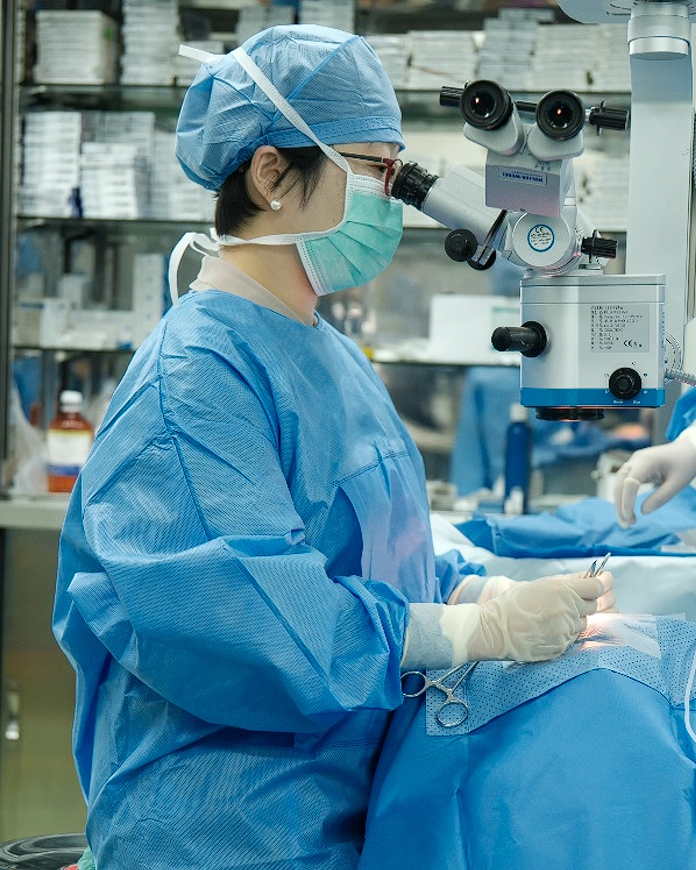
Professor Liang Lingyi performing surgery on a patient with a corneal-conjunctival neoplasm
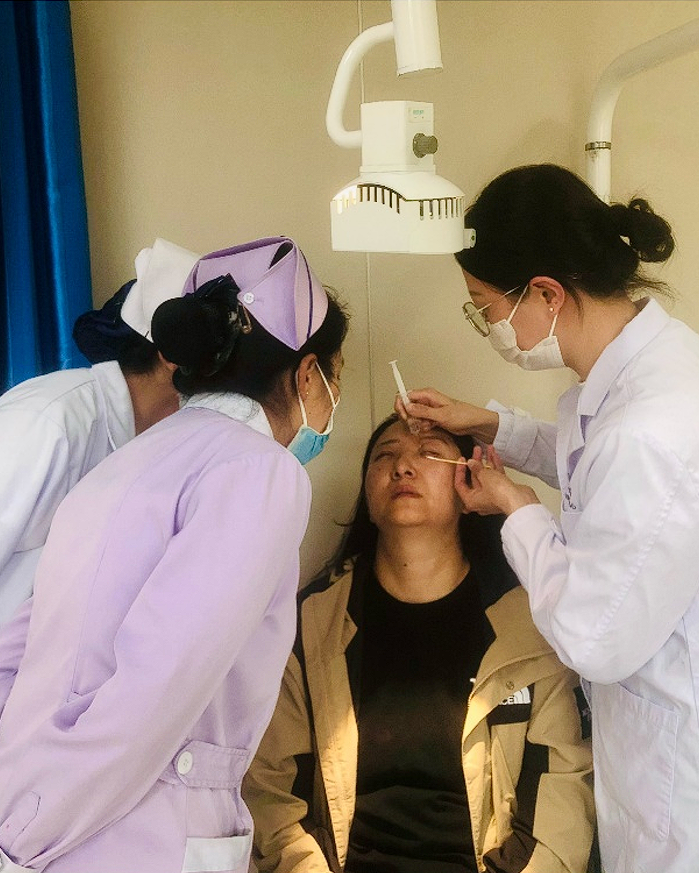
Head Nurse Lin Jingyi instructing grassroots nurses on ophthalmic procedures
Knowledge Transfer: Leaving Behind a Permanent "AI Medical Team"
Utilizing this innovative AI-enabled tri-level model, the ZOC team covered nearly 600 km over three weeks, reaching townships including Baizha and Juela (Nangqian County), and Longbao and Xialaxiu (Yushu City). They conducted multiple training sessions on AI ophthalmic applications, instructing over 50 grassroots health workers. Using ChatZOC, they successfully screened 275 individuals. Review by associate chief physicians or higher confirmed eye disease in 140 cases. The top three conditions were cataracts, refractive errors, and ocular surface diseases like pterygium. Several cataract patients, one patient with a corneal-conjunctival neoplasm, and two pterygium patients identified through screening received surgery via the "Yushu Brightness Restoration" program.
Caiduo, Director of Longbao Township Central Health Center, spoke highly of ChatZOC: "With this tool, my village doctors can conduct initial eye screenings house-to-house using just a phone. We can stock common eye drops based on the statistics of prevalent conditions. This allows villagers to receive initial, effective treatment right here, a huge convenience." He added jokingly, "Over time, I might even become half an ophthalmologist myself."
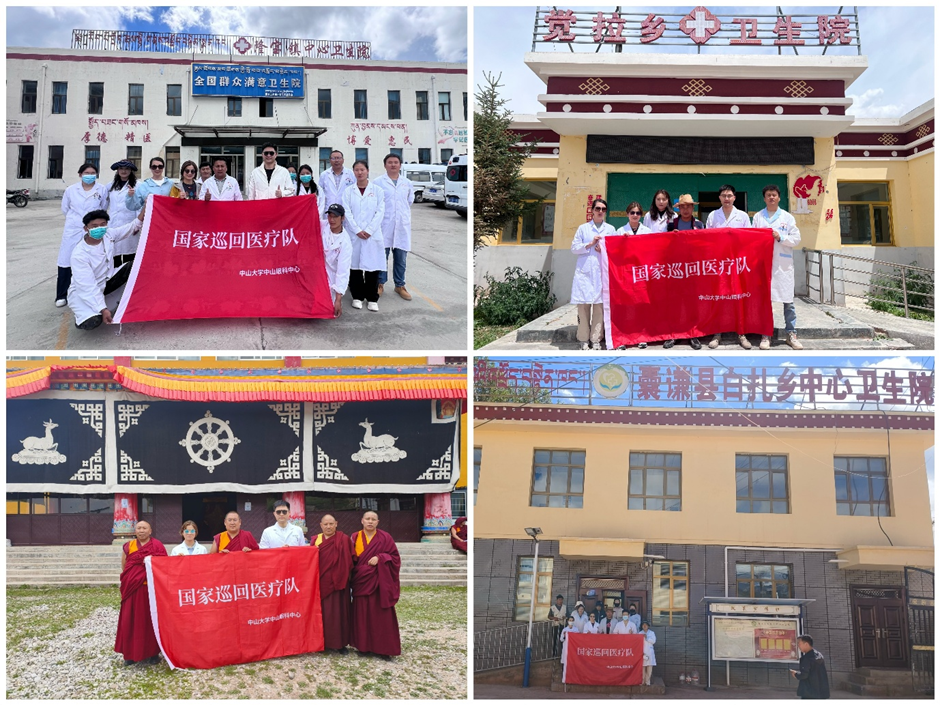
The successful practice by the ZOC National Touring Medical Team in Yushu is not only a vivid example of technology empowering eye health but also signifies ZOC's progressive exploration of an effective "new pathway" in applying cutting-edge AI to address the scarcity and uneven distribution of ophthalmic resources in remote areas.

